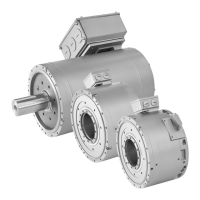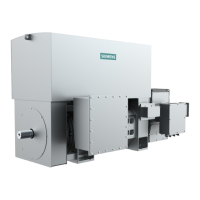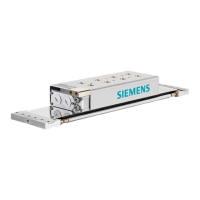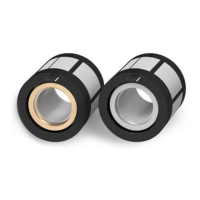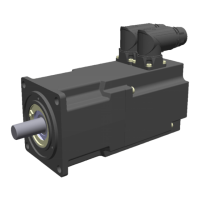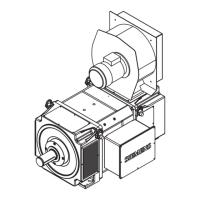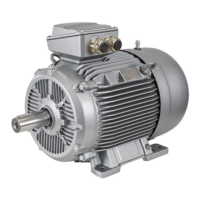1FW6 Built-in torque motors
Configuration Manual, 07/2017, 6SN1197-0AE00-0BP9
53
A water-cooling system dissipates the heat loss generated by the stator winding.
● Connect the cooling ducts to the cooling circuit of a cooling device.
You can find the characteristic curves for the pressure drop of the cooling medium between
the inlet and return circuit of the cooling system as a function of the volume flow rate in
Chapter "Technical data and characteristics".
In certain operating states, you must expect an additional temperature rise of the rotor as a
result of iron losses, e.g. when operating at high speeds or in S1 mode.
The rotor power loss is specified in the "Technical data and characteristics" chapter in the
"Rotor power loss with respect to speed" characteristics.
The rated motor torques specified in the data sheets of Chapter "Technical data and
characteristics" apply under the following conditions:
● Operation with water cooling with a water intake temperature of 35 °C.
● Rotor flange temperature of the rotor mounting surface 60 °C.
To comply with these conditions, it may be necessary to take additional measures to cool the
rotor.
Demagnetization of the rotor magnets
If the heat from the rotor is not sufficiently dissipated via the flange, the rotors can heat up
excessively in the upper speed range in duty type S1. which could demagnetize the
magnets.
• Ensure that the rotor does not exceed the maximum temperature of 120 °C.
Note
Thermal expansion of the motor
Depending on the load and duty type, the average temperature in the stator and rotor can
reach 120
°C. Temperature changes in the stator and rotor can cause the motor components
You must take into account the amount of heat transferred into the machine construction
as well as the radial and axial thermal expansion of the motor when the designing the
machine.
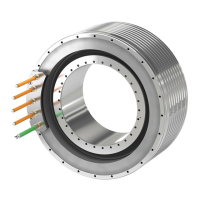
